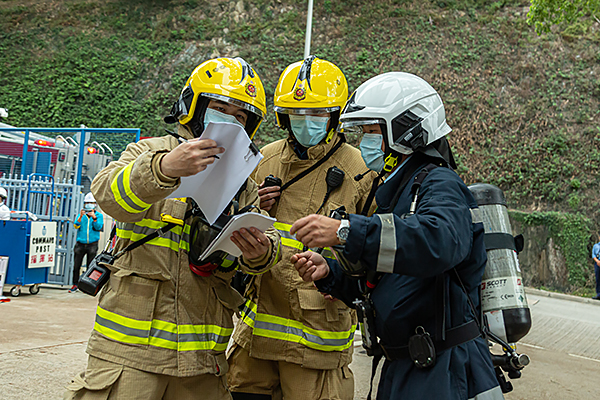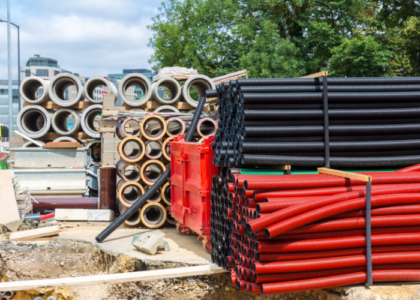Moving into a new house can be one of the most exciting milestones in one’s life, but it should come with much responsibility. Of all the things considered, fire safety management is very important and at the same time often overlooked when one has their dwelling. Fire management and safety go beyond simply putting fire extinguishers in place; proper fire safety management involves preparations, prevention, and proactive designing. Look at how fire-safety management saves lives and should be first in line for budgetary funding for your new home.
Why Fire Safety Management Is Important
In any case, the management of fire safety is not a set of rules but, in real life, a practice in which life can depend on the difference between an incident and a catastrophe. It includes the knowledge of the risks involved, the application of preventive measures against those risks, and the preparations for emergencies. If you are in a new home and don’t know your way around or any potential hazards, it is critical to establish a fire safety plan. It should specify the escape routes, fire alarm systems, and how frequently your home should be safety-checked. By considering fire safety management as a top necessity at the early stage of constructing and setting up your new home, you are trying to ensure the safety of all family members.
Principles of Fire Safety Design
Considering the fire safety design principles will reduce the risk of fire accidents at your new home. Such principles involve proper smoke detector installation, the easy accessibility of fire extinguishers, and clear and unobstructed escape ways. See if your home design and layout could support you to stay safe in a fire. For example, the correct placement of smoke detectors in a kitchen, bedrooms, and around the hall walls could then be capable of providing alarms in high enough time to allow for an opening to get out earlier in the event of a fire, other than that, easily accessible doors and windows should be kept within reach in case of potential features for an emergency. All these principles can be well executed by consulting with an experienced fire protection engineer for maximum benefits in making your home as fire-safe as possible.
The Role of a Fire Protection Engineer
Key people in your home being fireproof are fire protection engineers. They specialise in laying out fire protection methods for a building and creating a fire safety system that will keep your property and loved ones safe. If you are building a new residential house or just moving into a current one, you have a lot to gain from seeking a qualified fire protection engineer who will offer insights on how to be safe from fires. They may examine and evaluate your home’s current fire safety measures, make improvements, and ensure that everything is set up and by the required standards. With their expertise, you can stay clear of potential hazards and avail yourself of a safer living environment.
Regular Maintenance and Inspections
Fire safety management doesn’t stop once you have set your home’s safety system – its effectiveness depends on regular maintenance and inspections. It involves testing smoke detectors and replacing their batteries, inspecting fire extinguishers, and clearing the escape route at all times. It’s equally easy to grow lax in a new home where everything seems fresh and secure. Neglecting routine maintenance can make things seem safer than they are. But with checks done regularly, you can keep your fire safety in working order—a dependable protector of you and your family.
External Factor Consideration: Wind-Driven Rain Simulation
Although fire safety management aims to prevent and control fires, studying the impact of external conditions under which the passage of wind-driven rain may take place is considerable. It can affect the level of fire protection measures to a considerable degree within modern homes that have either outside finishing or open layouts. Wind Driven Rain Simulation is a resource that should be used to expose the penetrations in your home due to the action of heavy wind-driven rain and the damages that could be caused to your safety systems. By being aware of how wind-driven rain penetrates past your home’s barriers, a solution could be found to provide additional protection for these site features so that your fire safety systems remain effective even under these extreme weather conditions.
Educating Your Family on Fire Safety
Lastly, fire safety schemes may be excellent, but it is essential to instruct your family on fire safety measures. Everyone in your household needs to know what to do in a fire, from recognizing the sound of the smoke alarm to knowing the quickest escape routes. Regular fire drills will reinforce this knowledge, and everyone will be ready to act quickly in control during an emergency. Making discussion and raising points on fire safety a part of the family home will empower your family to proactively assume control of their safety.
It’s part of the critical aspect of home ownership, possibly the difference between saving lives and saving property. There are many things new homeowners can do, from incorporating principles of fire safety in the design of homes to speaking with a fire protection engineer, to make their new homes safer in terms of fire. Include this comprehensive fire safety strategy in regular maintenance, consider the effects of external factors like wind-driven rain, and educate the family.
Contact SHEVS IFT Consultants today to secure your new abode to safety with the right fire safety management — your safety and peace of mind depend on it!







